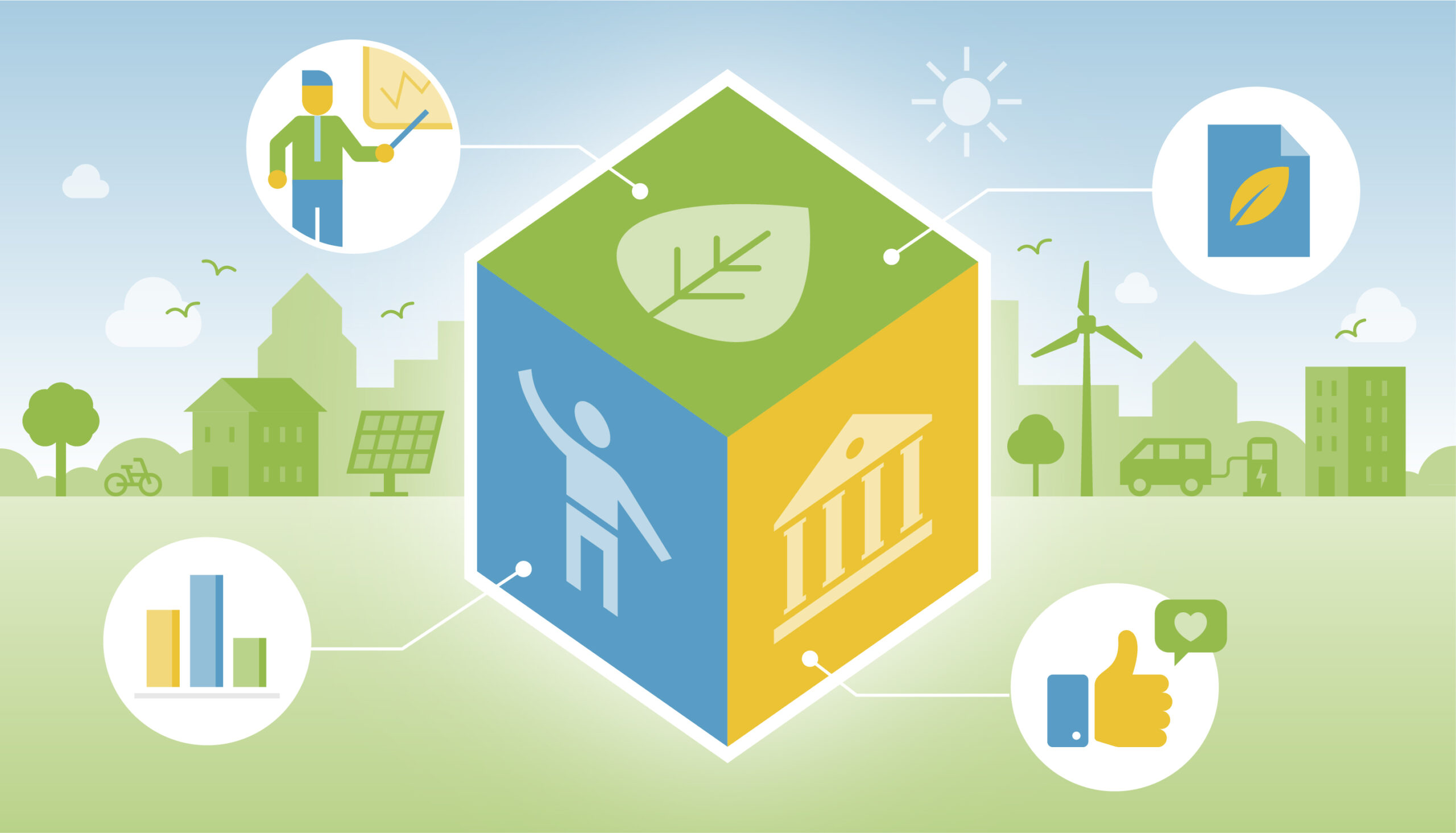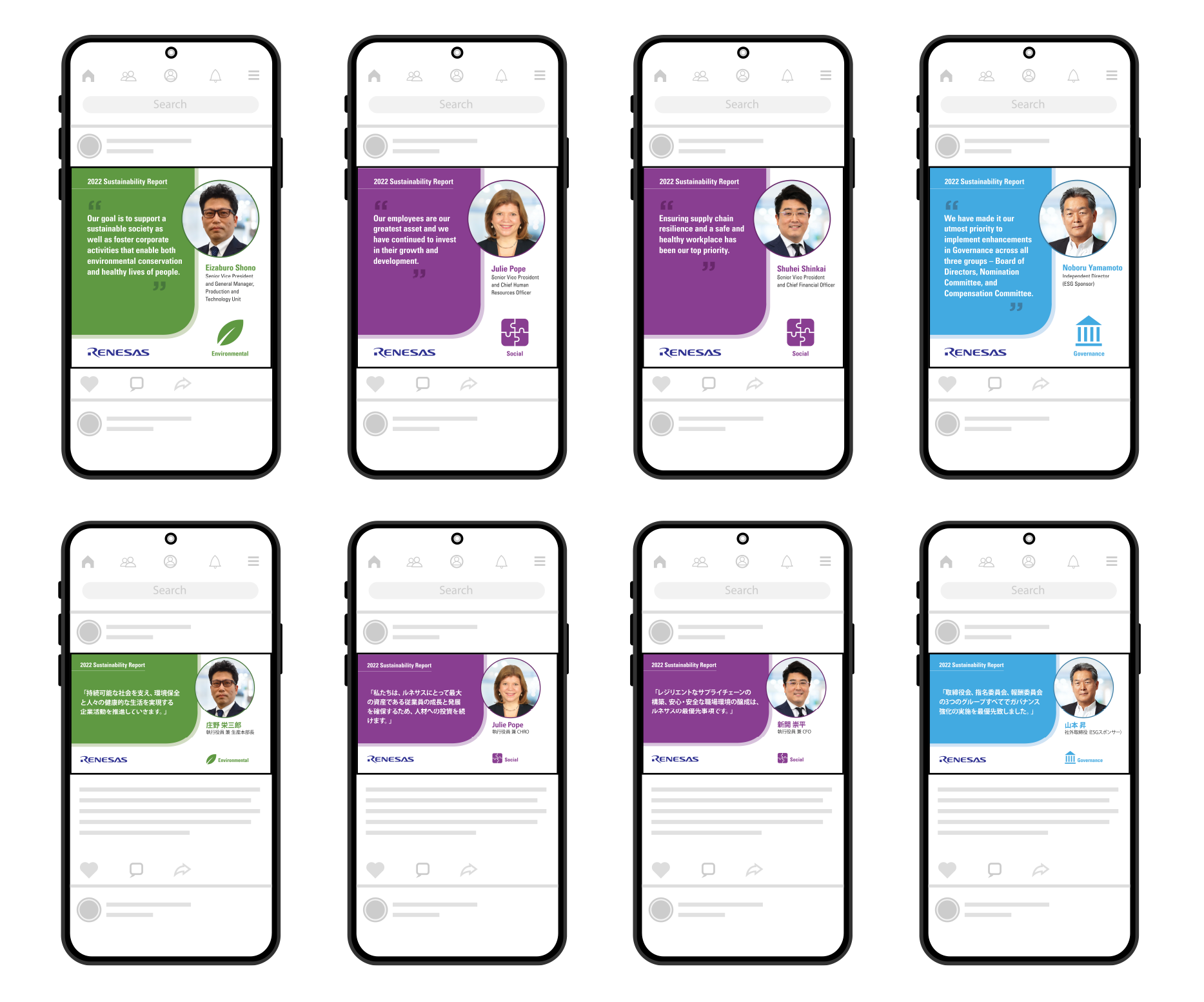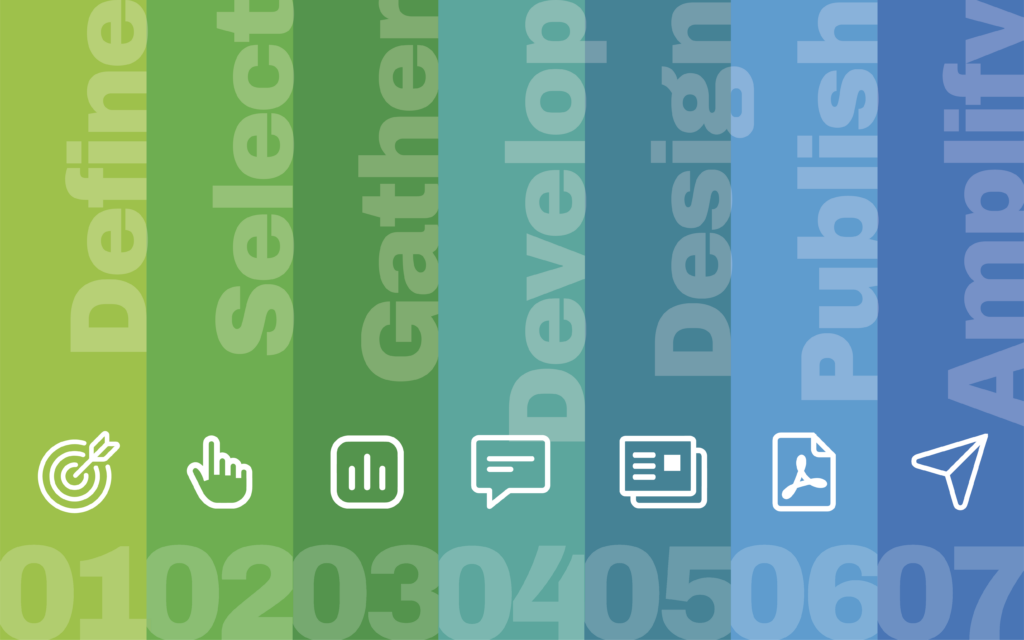How to Market Your ESG Strategy to Stakeholders
Sustainability & ESG, Guides / June 20, 2023
By Paul Gassett

This article explores how ESG marketing can be used to engage stakeholders and increase brand awareness.
Marketing your ESG report or sustainability report to stakeholders is essential to ensuring that your ESG strategy is successful. You can do this by raising awareness of the importance of ESG and its impact on the performance of your company. You should focus on the benefits of implementing an ESG strategy, such as improved public perception, enhanced customer loyalty, reduced corporate risk and long-term sustainability.
You can also use digital marketing tactics to reach stakeholders. This includes creating content for social media, creating blogs and webinars, and running targeted campaigns. Additionally, you can utilize more traditional communications such as print advertising, press releases, radio, and television.
Also, consider engaging with stakeholders through events such as conferences and meetings. This will help you to create a personal connection with stakeholders and build relationships that can lead to more meaningful conversations about your ESG strategy.
What is ESG Marketing?
ESG marketing is a strategic approach to marketing that focuses on promoting a company’s commitment to the environment, social responsibility, and good corporate governance.
In order for ESG promotional activities to be successful, companies must provide evidence of their progress towards their objectives. Developing campaigns, messaging and content that feature the company’s ESG commitments, sustainability progress and how the company is reporting data is part of this process.
Typically, companies’ reports communicate their efforts around sustainability, ethical practices and corporate social responsibility. The goal of ESG marketing is to enhance brand equity and share the positive impacts of the company’s ESG efforts through the marketing campaigns.
ESG marketing should be embraced as a pillar within your overall ESG strategy. Sharing the progress of your company in the areas of environment, social and governance all support this critical initiative.
Under each of these areas, marketers should determine which themes their audiences are most interested in and which topics will create the most engagement. Then market those themes and topics robustly starting with digital content marketing.
See how OBATA helped Renesas Electronics market their inaugural Sustainability Report
Renesas, a premier supplier of advanced semiconductor solutions, is headquartered in Tokyo, Japan. After OBATA designed their inaugural report, we were asked to help Renesas share the report by designing marketing tools that included a video, web page banner and images for social media posts.
Renesas highlights the report with a banner image and message and link on its homepage.

On the Renesas Sustainability landing page, we created a short video featuring a few highlights from the report.
To increase awareness and viewership of the published report, we created several social posts using quotes from executives to introduce the report to stakeholders – created in both English and Japanese.

In addition to digital marketing, consider other ways to share and make your ESG content more accessible. The most common way for distributing your ESG annual report is the downloadable PDF. There are several ways to share your report and increase stakeholder reach. These efforts include developing:
- ESG data sheets
- ESG highlights,
- ESG webpage
- Interactive PDF ESG report
These efforts will make it easier for stakeholders to access and comprehend the data in your ESG report. They will also help ensure that the information is clear and accessible. Additionally, consider creating videos and infographics to highlight key ESG initiatives or topics.
Videos that feature an interview with a key executive such as a CEO or sustainability officer can offer effective ways to engage and educate stakeholders. They will help spread the message of your ESG story.
Videos and images that share key highlights or quotes from subject matter experts within your organization can also be shared on social media. This will help to reach a larger audience and make the report more visible.
These efforts will strengthen your company’s brand reputation and long-term relevance.
RELATED ARTICLE:
How to Create an ESG Marketing Plan
Businesses that are driven by a sense of purpose start their ESG journey by finding the most relevant ESG matters that are important to their industry and stakeholders.
Some measure the risk associated with the issues, analyze the UN’s 17 Sustainable Development Goals, and survey shareholders and customers to figure out which problems to focus on. Others respond to investor requirements or the need to minimize supply chain risks by reporting on Scope 3 emissions, for example.
Popular ESG frameworks include:
- Global Reporting Initiative (GRI)
- Carbon Disclosure Project (CDP)
- Value Reporting Foundation/Sustainability Accounting Standards Board (SASB)
- Task Force on Climate-Related Financial Disclosures (TCFD)
- United Nations Sustainable Development Goals (SDG)
In order to effectively communicate their sustainability goals and successes, companies must develop ESG (Environmental, Social, and Governance) strategies that incorporate meaningful metrics. Key stakeholders including shareholders, suppliers, employees and others will want to read about what is most important to them.
To begin this process it is important for businesses to consider how to effectively design and structure their ESG reports in order to accurately reflect the progress they are making in their industry and the environmental, social, and governance concerns they address.
Once an ESG program is established, it is essential to communicate its components and ESG progress metrics through a well-designed report. This communication should be done in an effective and best-in-class way.
Effective ESG marketing considers its audience. It seeks to present information in an engaging and understandable way. This could be a comprehensive report, an interactive website, or more accessible formats such as videos and social media posts. The way the message is conveyed may vary depending on the platform, but the core narrative and content should remain consistent in all forms of media.
ESG Digital Content Marketing can Sustain your Relevance
ESG digital content marketing is an effective way to stay relevant after your report is produced. Digital marketing builds trust with potential customers by providing content that resonates with them. Additionally, it highlights the sustainability progress of your business.
First, identify your target audience to create an effective ESG digital content marketing plan. Understand their needs and come up with content ideas that address those needs. Make sure the content ideas are meaningful.
Consider the channels you will use to distribute your content. Also, think about the metrics you will use to measure its success.
When developing these initiatives, it is important to emphasize the importance of ESG marketing and its positive impacts. Make sure to explain the purpose of each initiative and how it fits into the overall ESG marketing strategy. This will help engage your audience and make them more likely to take action.
Consider partnering with reputable organizations and influencers. This will amplify your message and create more meaningful engagements with your target audience. Finally, keep track of your results to measure your success and adjust your strategy accordingly.
Take time to create a comprehensive ESG digital content marketing plan. This will ensure your ESG initiatives have the desired impact. It will also help your company stand out from the competition.
There are also better and worse ways to communicate ESG progress.
The most effective way to communicate advances in ESG is to make the progress relatable to the audience. For example, instead of simply mentioning a 50-tonne CO2 reduction, connecting it to a more tangible comparison like planting a certain number of trees or taking a certain number of cars off the road can provide more context.
Choosing an ESG Report Partner for Design and Marketing
Working with an ESG report design partner who can help guide you through the ESG report design process can help improve the outcome and ultimate success of your report.
Contact us to learn how we can help you market your company’s ESG strategy to its stakeholders.


